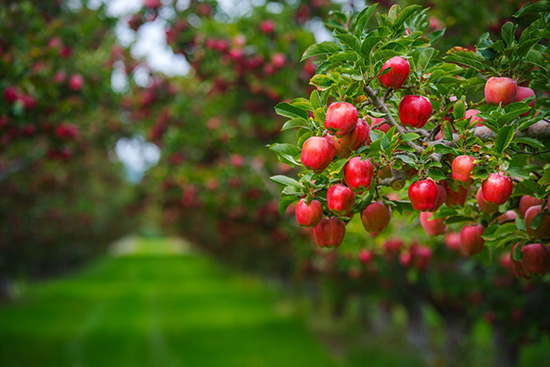Converting forests and grasslands to farmlands has already disturbed soil structure and natural ecosystems, releasing much of that stored carbon in topsoil made its contribution in global warming. Over the centuries, the growth of farmlands has released hundred billion metric tons of carbon from the top layer of soil. Agriculture is also a major contributor to global warming, by generating about 19–29% of total greenhouse gas (GHG) emissions.
Storing carbon in agricultural soils
Scientists have estimated that agriculture soils could capture over a billion additional tons of carbon each year. Agri-fields take up about 10% of the Earth’s land, and are a major target for soil-based carbon capturing.
Farmers can store more carbon in their field’s soil by planting such kinds of crops, which do not die off every year, and grow deep roots that help soils store more carbon, known as perennial crops. Other kinds of crops such as peas, beans and clover can be planted after harvest of the main crop, to help soils suck carbon year-round, and can be stored under the ground. This green manure adds more carbon to the soil. Farmers are also suggested to do less intensive or no tilling. Tilling prepares the field for next crops and helps control weeds, but it also releases a lot of carbon stored on the upper layer.
The Limitations of soil-based carbon capturing
There are hundreds of millions of farmers in the world, mostly farming in small pieces of land. To make this soil-based carbon storing an effective climate solution, we may need so many of these to start doing no-tilling farming, now and in the future for years. This is a big challenge, and many debates on the real possibility of how much carbon can be stored over the long term.
Climate change is increasing Global Warming, this is speeding up the decay of soil organic matter, which is not only releasing soil-carbon rather making the soil harder and stopping the natural process of carbon storage in soil. This is wide-spreading across the planet, we are already looking at this happening in the Arctic as permanently frozen soil (Permafrost). This CO2 releasing process may become a self-reinforcing loop, in which released soil-carbon warms the Earth, causing soil to release more carbon.
Concluded by Scientists that soil-based carbon capturing, like other negative emissions technologies, can help reverse climate change, but cannot suck carbon from the atmosphere as fast as we are currently releasing it. To reverse global warming, we need drastic cuts in greenhouse gas emissions along with this soil based carbon capturing technique.


